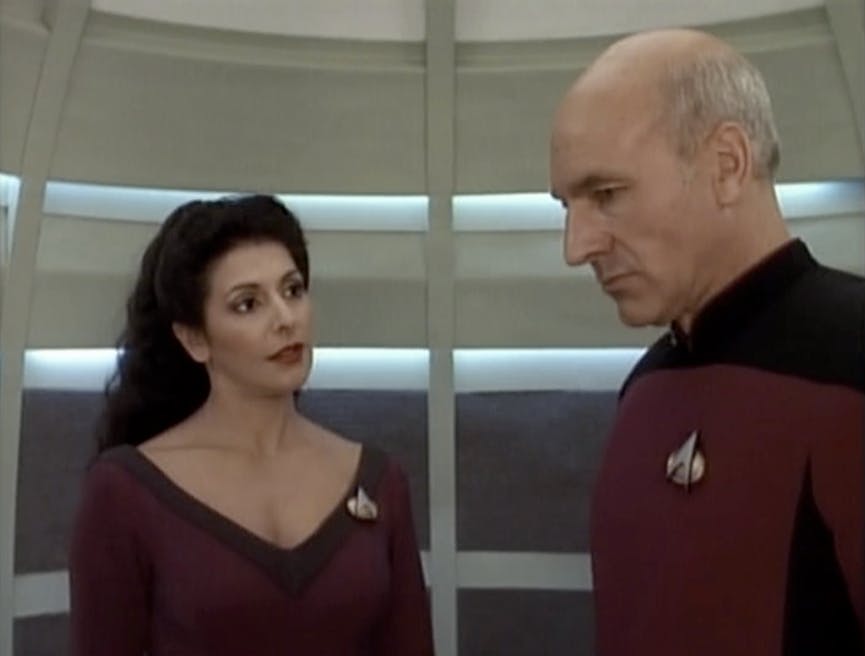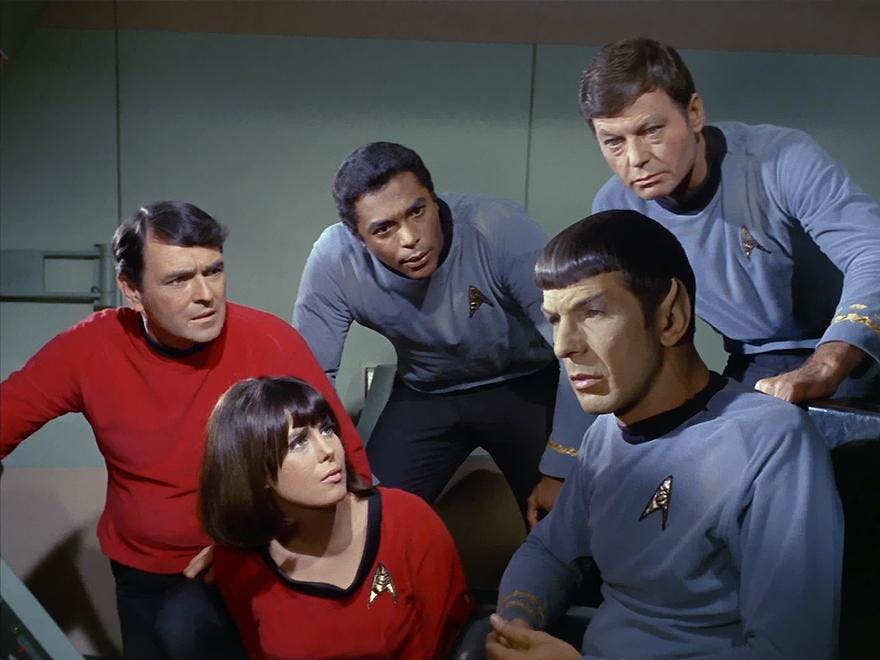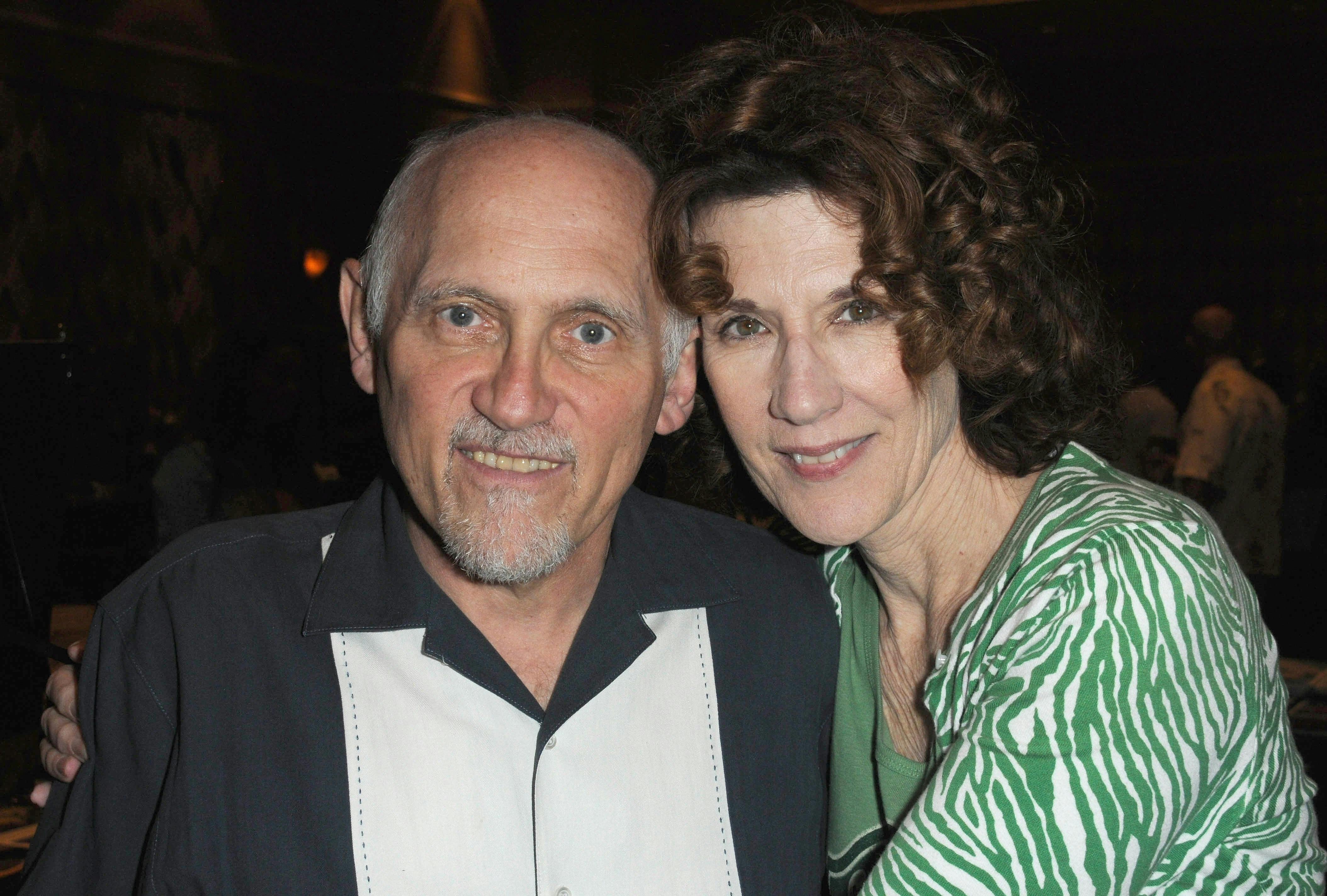Published Aug 22, 2019
Engaging My Collective
Therapy and medication were essential when it came to fan Jay Stobie's battle with OCD, but the real life connections forged through 'Trek' proved just as crucial.

StarTrek.com
In my universe, Star Trek transcends its origins as entertainment. Every fan gravitates towards elements of the franchise that resonate with them on a personal level, whether that involves cosplaying, accumulating memorabilia, creating art, attending conventions, or participating in other social activities. For me, Star Trek stands as a crucial ally in my daily struggle with obsessive-compulsive disorder (OCD) and anxiety. Clearing my mind with deep dives into individual episodes and films, expressing my passion for Star Trek Online, humbly heeding advice from Armin Shimerman and John Billingsley, and forging friendships throughout the fandom have combined to supply me with an invaluable support system that I regularly rely upon to cope with my condition.
Discussing mental health can be just as challenging as dealing with its symptoms. While popular culture often portrays OCD in a simplified fashion, in reality each person diagnosed with the disorder endures an ever-evolving set of hurdles. The severity of my OCD frequently fluctuates, creating new roadblocks and sending me scrambling to adapt like a Borg drone under attack. My obsessions and compulsions were relatively mild until my early twenties, when an extended bout of unemployment left me with too much time on my hands and not enough tasks to occupy my mind. Unlike Captain Picard, who wisely sought out Counselor Troi’s guidance after his ordeal with Gul Madred in The Next Generation’s “Chain of Command, Part II,” I was foolishly reluctant to find professional treatment. Coupled with my anxiety, my OCD ran rampant and asserted control over my life.
I dealt with many common symptoms of OCD, but the most pervasive ones that I experienced related to an obsession with thinking about worst-case-scenarios for every aspect of my life, and an intense germophobia.

StarTrek.com
Yes, we all worry, and of course no one is a fan of being sneezed on, but OCD is different. It left me irrationally terrified. I avoided weighing in on important matters (What if my counsel sends someone down the wrong path?), questioned my evaluation of friendships (They are just being polite, we aren’t really friends… are we?), and isolated myself (No one will understand what I’m going through, they’ll think I’m crazy!). Anxiety over being behind the wheel caused me to stop driving, which worsened my self-imposed quarantine to an even greater extent.
As for my fear of germs, I lacked the courage that Captain Janeway displayed when she fought the macrovirus in Voyager’s “Macrocosm.” The best way to describe my phobia is with a slightly morbid example: If you go to a pizza place and notice a small red spot on the table, there is an overwhelming probability that it is simply a drop of tomato sauce. However, if I saw the spill, I would immediately associate the color with blood and wonder if it contained something transmittable. My brain is wired to take a remote possibility and ratcheted up the stakes; the substance was either sauce or blood. The unlikely suddenly became a straight 50/50 scenario. Even after leaving the restaurant, my thoughts would creep back to that single red dot. My concerns occupied my consciousness and prevented me from focusing on anything else.
Fortunately, Gene Roddenberry’s creation soon gave mean alternate galaxy to immerse myself in. My interest in Star Trek began when I saw, “The Galileo Seven,” at age eight. From that point on I was hooked, watching each show and film with rapt attention as my fascination with the sleek starships, alien cultures, and progressive storytelling grew with each passing year. My mom welcomed a puppy into our family when I was eleven, and I named my new “little brother” Bones in honor of the U.S.S. Enterprise’s very own Dr. Leonard McCoy. My grandparents played a key role in raising me and shared my interest in Star Trek as well, which meant that each episode also offered an excellent bonding experience.

StarTrek.com
Star Trek proved to be one of the few joys that kept me centered during my darkest days. As a Deep Space Nine fan who loves starships, I was captivated by the massive fleet scenes from the Dominion War arc. On a whim, I decided to see if I could count and identify all of the Dominion, Cardassian, Federation, and Klingon vessels that appeared on-screen in the action-packed episode “Call to Arms.” I surely spent too much time analyzing the scenes frame-by-frame, but I soon realized I found solace from my OCD and anxiety by redirecting my attention to something positive. This prompted me to go through all of the Star Trek series and films and catalog every single ship that appeared or was referenced in dialogue. I’m definitely the person you need to talk to if you would like to know how many Galaxy-class starships appeared to confront the Borg sphere in Voyager’s finale “Endgame.”
During this process, I saw myself in Reginald Barclay’s fear of transporters in The Next Generation’s “Realm of Fear,” and in the claustrophobia that Elim Garak grappled with in DS9’s “By Inferno’s Light.” Connecting with the way those characters confronted their phobias empowered me to finally see a therapist and begin treatment for my OCD. Speaking with a medical professional and taking medication for my condition energized me with enough confidence to finally search for ways to express my passion for Star Trek and discuss the franchise with other fans. Luckily for me, social media’s popularity furnished the perfect outlet to secure this lifeline.
Although my background is in social media strategy, talking Trek was the first time that I began employing the various platforms for personal use. Quickly, I found myself enjoying Twitter exchanges about theatre and philanthropic undertakings with Kitty Swink, known to Star Trek fans for playing Bajoran Minister Rozahn in DS9’s “Sanctuary” and the sinister Vorta Luaran in “Tacking Into the Wind.” I began to contribute freelance guest blogs to StarTrek.com, a thrilling experience that put my expertise to good use as I wrote analytical pieces on an array of characters, story arcs, aliens, and episodes. Fate soon smiled upon me again, as I met Swink and her husband Armin Shimerman in person at Star Trek: Mission New York in 2016.A month after we met, I received a phonecall that began, simply,, “Hello Jay, my name is Armin Shimerman. I played a character named Quark on the television show Deep Space Nine.” I soon came to recognize that this gracious humility was a quintessential trait exhibited by Armin. Aware that her husband needed assistance with a political endeavor, Kitty had recommended that Shimerman get in touch with me. My work with Armin entailed collaborating with quite a few other Star Trek veterans, and I soon found myself helping several of them with their own personal projects.

Getty Images
John Billingsley, who portrayed Doctor Phlox on Enterprise, enlisted me to join a team that was organizing an initiative to encourage community volunteerism. John’s sense of humor and welcoming demeanor led to an immediate and natural friendship. In the time since, I have had the pleasure of discussing charitable fundraising ideas with Jonathan Frakes, Robert Picardo, Kristin Bauer, Tim Russ, Bo Yeon Kim, Nana Visitor, Ted Sullivan, and other Trek luminaries. Witnessing each person’s altruism and unwavering dedication to causes close to their hearts inspired me to invest extra time in humanitarian projects. My therapist often reminds me that exercise is beneficial to one’s mental health, and I believe the same can be said of finding a purpose and giving back to society.
Creative pursuits aside, my admiration for Shimerman and Billingsley knows no bounds. We rarely talk about Star Trek itself, but these two gentlemen uphold Gene Roddenberry’s vision for an enlightened future with every breath. When my OCD and anxiety kindle my self-doubt, Armin and John are always ready to chat and grant some much-needed perspective. Billingsley’s tireless campaign to aid the homeless through the Hollywood Food Coalition and Shimerman’s enthusiasm for passing on his thespian wisdom at Antaeus Theatre Company exemplify their benevolent ideals. I’m honored to cherish John and Armin as members of my extended family.
Social media also supported my foray into initiating friendships with Star Trek fans around the world. Star Trek: Discovery’s popularity as a trending topic made connecting with like-minded people even easier. I regularly rave about DS9 with Asher Huey, laugh at GIFs sent by Harmony Carrigan, swap mental health tales with Janice Chan, find brilliance in Steffi Hochriegl’s art, seek out Steve Kirk’s sageness, joke with Mary Fan, express awe over Chris Weitz’s talent, check in with Marguerite Krause, trade stories with Laurie Ulster, or listen to Amy Imhoff chronicle her appreciation for Gwendoline Christie. In addition to this sense of community, social media prevents me from feeling left out of major happenings. Reading Star Trek’s official Twitter feed and observing its Instagram posts during San Diego Comic Con and Star Trek Las Vegas presents me with the sense of actually attending the events.
STLV 2019: That's a Wrap
My freelance contributions to official Star Trek publications eventually expanded to include writing articles for Star Trek Magazine, which opened quite the special door in my life. The income afforded me with enough financial flexibility to adopt a rescue puppy last year. I wanted to select a unique name that contained a subtle nod to Trek for my dog, just as I did with my childhood companion Bones. A sudden revelation provided me with the perfect name: Midas. The reference to Starfleet’s Mutara Interdimensional Deep-Space Array System (also known as the MIDAS Array) fit perfectly, particularly in light of the satellite’s purpose for long-range communications and its association with Reginald Barclay. After all, a device that connects people in distant locales and is operated by an officer besieged by phobias seamlessly reflects my journey. Born in Puerto Rico during the aftermath of Hurricane Maria and brought to a shelter in Pennsylvania, Midas swiftly became my best pal and captivated the hearts of everyone in my family.
I do want to be clear: my therapist and the medications she prescribed for me have been vital in curbing my germophobia and other common symptoms of OCD and anxiety. I still face a tough road ahead, but I owe much of my progress to my family, friends, and Star Trek. In fact, I attempt to repay that debt by acting as an informal ambassador and honoring the IDIC philosophy. While I still do not drive, my path forward has emerged as one that revolves around camaraderie, good deeds, and Star Trek. Hopefully, my personal voyage will parallel the bright future that Star Trek: Picard, Star Trek: Discovery, and other projects represent for the franchise.

